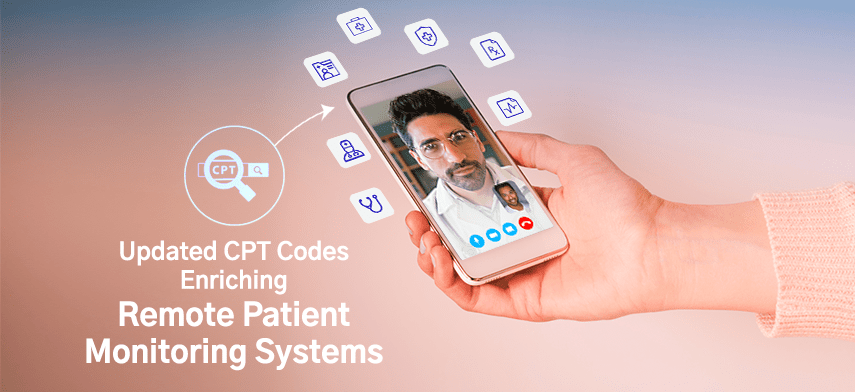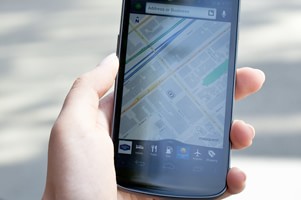CPT codes, which are used to bill clients for healthcare services in the medical industry. In terms of RMP (remote patient monitoring), this means billing clients for monitoring their health remotely and providing healthcare services. The CPT codes are used for billing the Centers for Medicare and Medicaid Services (CMS), thereby creating a revenue model for small and medium medical care providers.

In 2021, updates were made to the CPT codes with regards to RPM, making it more robust and increasing reimbursement charges for RPM providers. This change has made it so that these providers will now be able to bill patients more for using a remote monitoring system to gather patient data from their homes.
Why did CMS Expand the CPT codes?
In summary, the updated CPT codes made changes to the Medicare Physician Fee Schedule (PFS). It aims to make the reporting process more streamlined to evaluate patient management services, and it increases the value of all these services.
These changes were brought about with new requirements for remote patient monitoring and related services due to the onset of the Covid-19 outbreak. The CMS made clear what services are billable and what remote monitoring services are allowed. Before Covid-19, these devices need at least 16 days’ worth of data within 30 days to qualify for billing. But during Covid, CMS required less than 16 days.
Prerequisites for RPM Billing
To bill a client for RPM services, certain requirements need to be met to qualify for it:
- All medical practitioners should be practicing following the applicable state law. All RPM services are allowed to be performed by any qualified healthcare professional as long as they comply with the laws.
- Previously the CMS required patients to be considered as having “chronic conditions” to qualify for RPM billing. Now even acute patients can be monitored using RPM.
- Before, the technology used for these services should be a medical device that is approved and cleared by the FDA (Food and Drug Administration). Now, these devices, such as blood pressure monitors, do not need to be cleared, only defined by the FDA to qualify.
- Two-way in-person communication is not required to qualify for remote patient monitoring reimbursement.
Updated RPM CPT Codes for 2021
Here is the updated list of the CPT code for home health care:
1 CPT Code 99453
This code covers the one-time cost that healthcare providers can charge for enrolling the patient into the new system. This includes the time they spent setting up the CMS remote patient monitoring systems, teaching the patient how to use the system, and any other services that come along with this. Healthcare providers are now able to bill for this code once during 30 days.
2 CPT Code 99454
This CPT code allows providers to bill monthly. It is a reimbursement for the cost of leasing the home health care device to the patient, which includes the software used to run this service. The device should not be previously owned by the patient but instead should be provided by the healthcare professional. The device must only be used for home care and needs to automatically upload the data to the provider daily.
3 CPT Code 99457
This is the reimbursement for time spent monitoring a patient’s health data. Example – blood pressure, pulse, and weight. This can be billed every month but requires at least 20 minutes of monitoring for each month.
4 CPT Code 99458
This is an add-on to the previous code 99457, stating that healthcare providers can be reimbursed for every additional 20 minutes every month of active monitoring of the patient’s health data.
5 CPT Code 99091
This CPT code for medication monitoring looks at the time spent analyzing and interpreting the health data they receive from patients. At least 30 minutes need to be spent every 30 days to qualify for the reimbursement.
10 Most Significant Takeaways from the ‘Final Rule’
The Final Rule is what addresses all the changes to the PFS, RPM, and other healthcare services done remotely. Here is what we can learn from the changes:
1 Clarifying RPM device requirements
Previously, the CMS stated that for a device to be used to collect data, it needs to be approved and cleared by the FDA and that the data needs to be collected automatically rather than from the patient. As of late, there have been a few systems that require patients to manually upload this data, either by taking pictures or entering them into the system. This change clarifies that unless the device sends the information automatically, it cannot be used.
2 Interactive communication
It was clarified that interactive communication associated with the CPT codes 99457 and 99458 also included care management delivery and services and real-time association. Previously, healthcare providers were worried that text messaging, care planning, and other similar interactions would not be counted inside this 20 minutes.
3 Acquiring consent from patients
Previously, consent was required in advance from the patient to continue with the RPM service. The final rule allows for consent to be received during the initial setup of the services instead.
4 Provided coverage for acute patients
Now, RPM services can be administered to patients suffering from acute conditions as well. Previously, only patients with chronic conditions were considered to receive RPM care.
5 Relationship between patient and physician
Due to Covid-19, the rule where physicians need to have an ongoing relationship with the patient to provide RPM services was removed to accommodate the growing need. However, the final rule reestablishes this rule, deeming that a patient-physician relationship is necessary.
6 Policy for delivery of services by auxiliary personnel
Auxiliary personnel is the individuals who are directly working under the guidance/supervision of a qualified physician. They are considered auxiliary personnel as an employee of the healthcare provider or even if they are independent contractors or any other type of worker. The CMS approved a policy that allows these auxiliary workers to administer services even if they are not under direct supervision. They can do this for both CPT codes 99453 and 99454.
7 Who can bill for RPM services
This is a clarification that was already understood by most practitioners. It states that only physicians who can furnish evaluation and management services are qualified for billing RPM services for all the updated CPT codes. They also clarified that only one practitioner is allowed to bill for codes 99453 and 99454 during those 30 days. They are also required to check with the patient if they are already working with any other practitioners before providing the service.
8 Reconfirming the 16 days
Due to pushes from the industry trying to get this period dropped down to a lower figure, the CMS reconfirmed that there needs to be a minimum of 16 days’ worth of data to bill for CMS using these CPT codes.
9 Billing for code 99091
Before 2019, the code for billing was 99091. When the new code 99457 was released, professionals were unsure whether the old code 99091 can be used for billing as well while the 99457 code was still in play.
However, the final rule confirmed that practitioners are now able to bill for complex RPM management when they spend a lot of time managing patient data and going through a care plan with them. They also clarified that the 99091 can also be billed within the same 30-day period without affecting the 99457 medicare CPT code reimbursement.
10 The Two-Measurement Day Waiver
Due to Covid, a temporary measure was taken allowing for billing with only two measurement days if a patient is suspected of Covid or has contracted Covid. The final rule confirmed that this applies only to patients who are suspected or have confirmed that they have Covid-19.

The Prominence of Remote Patient Monitoring
As stated, the RPM billing service cannot be performed by any provider of the service. There are certain criteria they fall under to be eligible. Here are the providers who can perform RPM billing:
- Qualified healthcare professionals
- Qualified clinical staff such as medical assistants
- Physicians
- Companies that can set up and maintain RPM devices
The RPM technology has been around for some time but was given its time to shine when the pandemic broke out. With hospitals going over their capacity to supply, and a need for remote telehealth services, the RPM service came as welcome relief for both patients and providers.
Patients can receive:
- Detailed information on their physical health without visiting a hospital
- Immediate access to healthcare
Providers and professionals can benefit from:
- An increasing number of patients with favorable outcomes
- Easier compliance with patients
- A growing list of insurances and reimbursements
With these new CPT codes brought in, these providers and practices can be fully reimbursed for the services they provide, which was a problem in the past. Here are some ways they can generate revenue:
- CPT code 99453 – They can earn a little under $25 per patient as a one-time fee
- CPT code 99454 – They can earn $990 for every patient per year
- CPT code 99457 – They can earn about $730 per patient each year
- CPT code 99458 – They are potentially able to earn about $1150 per year for each patient
Bottomline,
A Remote Patient Monitoring system is proving to be invaluable during the Covid-19 pandemic. But, even after this time has passed, RPM services provide a lot of value for patients who are not able/not willing to leave home.
With the new CPT codes, creating a revenue stream through providing RPM services has become easier and more profitable than ever. For help with setting up RPM solutions for your healthcare practice, Mobisoft can deliver custom comprehensive software that fits your specific needs.

Author's Bio

Shailendra Sinhasane (Shail) is the co-founder and CEO of Mobisoft Infotech. He has been focused on cloud solutions, mobile strategy, cross-platform development, IoT innovations and advising healthcare startups in building scalable products.


